Video
youtube

#queer music#gay music#music#song#girls like girls#hayley kiyoko#pride#pride month#lgbt pride#gay pride
1 note
·
View note
Photo

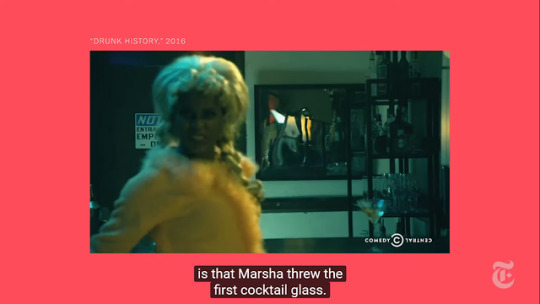


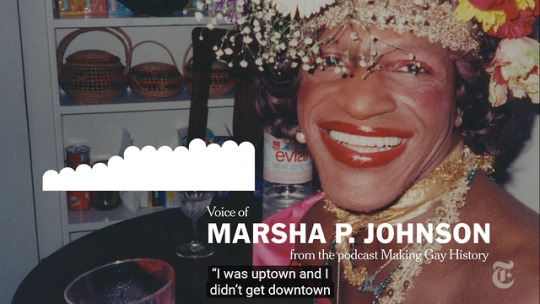
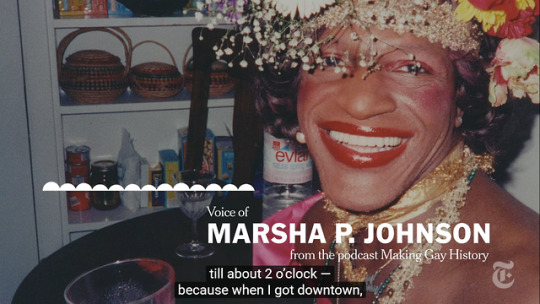
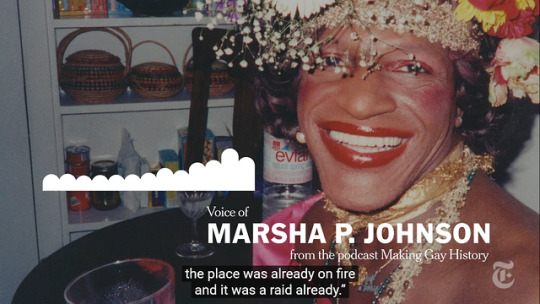



The Stonewall You Know Is a Myth. And That’s O.K. | NYT Celebrating Pride
Happy Pride! Know your history!
55K notes
·
View notes
Video
undefined
tumblr
To commemorate the violence against LGBTQ members, Pride Shield created a bulletproof rainbow flag. The thematic installation is made up 193 pride flags, one for every country in the world. When positioned together, they defy bullets, which aims to encourage the importance of togetherness. (Source)
More posts here: sixpenceee.com/tagged/posts
63K notes
·
View notes
Text
The Etruscans and Tomb of the Bulls
Let's talk about the Etruscans because the next item on our GLSEN timeline is the tomb of the bulls. Now, If you’re sitting there wondering “Who the fuck are the Etruscans?”, you're not alone. My school history classes taught me that the Greeks and the Romans were the og and while yes, we did adopt many things from them, they -the Romans specifically- adopted many many things from the Etruscans.
So let's talk. Who the fuck are these people right? The Etruscans were a nation of people found in central Italy (think… Tuscany) between the 8th and 3rd century BCE. They were quite influenced by the Greeks and were, in essence, the founding fathers of the Roman empire. They quite literally founded Rome, Like seriously. The first kings of Rome were Etruscans. Not only did they build Rome, and originally rule Rome, but Rome also adapted many things from clothing, architecture, and religious rituals. Hell, Rome’s gladiator battles even have root in Etruscan culture. So why aren’t we taught about them? It may have something to do with the Romans destroying much of their history when they took over, you know in the typical conqueror fashion. It may also have something to do with the fact that even the Greeks, as wildly liberal as they were, viewed Etruscans to be immoral. Just… take a second to let that sink in.
Etruscans were unashamed to be seen naked and very very sex-positive. I’m talking swinger level sex positivity as sharing wives was a custom. Women slept with not only their husbands but with whoever, and all children who were born were raised even though they may not have known who the father was. Women were famously free there enjoying the same liberties as the men. Which is really the thing that drove the Greeks and Romans to find the society so morally bankrupt as all three cultures were fine with homosexuality and pederasty.
Speaking of homosexuality, the second oldest timeline slot goes to the wall paintings found in the Etruscan the tomb on the bulls. So what is the tomb of the bulls? Well, its a tomb with bulls painted in it. The end, post over, go home now. Kidding, but actually, you’re almost at the end so... Discovered in 1892, the tomb of the bulls is one of around 200 or so Etruscan tombs located in Tarquinia. This particular tomb is dated at about 540-530 BCE. It's named for the fact that there are multiple bulls (with human faces) painted on the walls. Also on the walls are depictions of Achilles attacking Troilus, the myth of Bellerophon and Pegasus, and a young man riding a hippocamp. Oh yes, And a two wonderful sex scenes; one featuring a heterosexual trio, and one featuring a homosexual couple.
That is… Really all that there is to the tomb itself, I’m sure I could go into much more detail about it, but honestly, the tomb was kind of the least interesting part of all the research so… Whatever, I think that the way that this culture is portrayed through Greek and Roman writing is mildly hilarious and much more interesting than the tomb itself. As with the last post my sources and “notes” are listed in an additor page with the link below. Definitely check it out a little because A) doing your own research is important and B) this society is really fucking cool okay, look into it.
Additor link
https://app.additor.io/p/qcALv7dZ
#queer history#queer#lgbt pride#lgbtq#lgbtqai#lgbtpride#lgbt history#lgbt+ history#gay history#history#gay#rome#Etruscan#greek#tomb#I really need to start adding pictures to these posts
5 notes
·
View notes
Photo
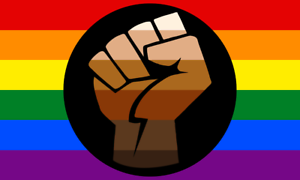







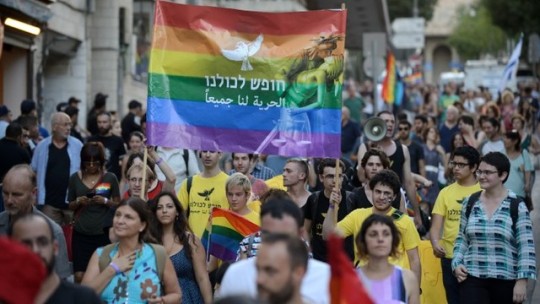
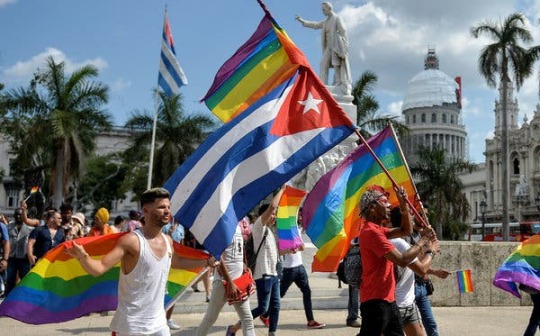
This Pride don’t forget your brothers and sisters fighting for their rights all over the world.
209K notes
·
View notes
Audio

#girl in red#i wanna be your girlfriend#song#music#lgbt pride#lgbtq#lgbtpride#lgbtqai#queer#queer pride#queer music#gay pride#gay#gay music
0 notes
Text
“the beginning”
For the majority of these events, I’m going to be using a timeline put out by GLSEN as a general guideline as far as major and impactful queer events. Each topic on the timeline is getting its own post where I delve in and try to find a bit more info and just generally fact check and such.
If you don’t know what GLSEN is, they are “the leading national education organization focused on ensuring safe and affirming schools for LGBTQ students.” It’s an amazing organization that not only does research on the pervasiveness of bullying and discrimination of queer youth in schools, but they also work with the students and teachers in those schools to help make safer spaces.
Anyways, their timeline starts off with Khnumhotep and Niankhkhnum, and… before I get into this story I want to reiterate a point. Queer history, by and large, has not had records kept. Or at least not kept well. Most things in life as a general rule have a large amount of bias, and let’s just say… double that amount for the topic of queer history. Now, I wanted to reiterate that point because Khnumhotep and Niankhkhnum lived in about 2380 bc and if we find poor record keeping of things that happened even within the past century just take a moment to let the fact that this is a pair of people who lived about 4000 years ago.
Before I get into the controversies surrounding this particular pair lets take a look at some things here. Thing one: the tomb of Khnumhotep and Niankhkhnum was discovered in 1964. In the United States around the 60′s was when the gay rights movement was just starting to pick up a bit. Illinois had just become the first state to decriminalize homosexuality which, while not changing the fact that the major popular opinion was still quite anti-queer it was a stepping stone. Thing two: Homosexuality in present-day Egypt is a prosecutable offense. Thing three: Sexuality was perceived quite differently in ancient Egypt, it was not frowned upon or shamed in the ways that modern cultures tend to do.
While homosexuality has been referenced in ancient Egyptian text the connotations are not exactly clear. We know that religion in those times had stories of homosexuality, incest, masturbation, and adultery. We know that gods in those times were portrayed as having lots of sex and sometimes having homosexual relations. We know that lesbian sex was acknowledged in writing at least once on purpose and once that may or may not have been an accident. We don’t, however, know to what extent homosexual relations were accepted. Typically the views seem to point to it being that homosexual acts were frowned upon from a religious standpoint, but also that it was kind of alright or at least not as bad so long as you were the dominant one?
So now that we have a bit of background information, let’s talk about Khnumhotep and Niankhkhnum. As I already said the tomb was found in 1964. Already an oddity in the fact that two men of equal status shared a tomb, something else was quite peculiar, although the two men were shown to have wives and children, they were also shown several times in various embraces with each other. The type of embraces used to denote married couples. One of these embraces even showed one of the men kissing the other on the nose, and while their wives were shown in the tomb they were never pictured in any sort of embraces with them.
Naturally, when Mounir Basta (The first explorer to find this particular tomb) saw the images of Khnumhotep and Niankhkhnum in these embraces that we know to have been used in other tombs to denote marriage his reaction was that these two men were… You guessed it. Twin brothers.
Now, I made the points about how homosexuality was being viewed in the US at the time and how homosexuality is still being viewed in Egypt for a reason. In a country that is still very anti-queer, why would they put any sort of resources into looking for queer history? Why wouldn’t they actively try to continue erasing that history? Why would they tell us anything other than that they definitely must have just been brothers? No homo here guys, you’re looking for something that doesn’t exist.
That may sound like the start of a bad conspiracy theory, but the three main explanations of this pair are that 1) They were twin brothers, 2) They were conjoined twin brothers, or 3) That maybe they gay lovers who had children for the sake of having children because of the fact that that was something that was very culturally important at that time and fathering children was how they proved their masculinity back then and oh yea, also they believed in sex in the afterlife but the wives weren’t buried with the husbands which is something that totally would’ve been a thing back then- But no. The official explanation at current is that it is generally accepted that the two men were brothers, most likely twin brothers.
While the fact that something with so much potential to be analyzed for the sake of understanding the place of queer peoples throughout the history of the world is blatantly overlooked by most Egyptologists upsets me, I found a quote that I think sums up this issue quite well; “Queer Egyptian history is thus caught in a double bind: it is rarely seen as queer, and rarely seen as African.” alluding to the fact that while Egypt is part of Africa it is almost never looked at or combined with other notable African empires. It is instead compared to Greece and Rome or examined from the viewpoint of its impact within the middle east. That plight though, is a tale for another person at another time.
On that note, I will leave a link to the Additor post that has all of the different sources I looked at and used while learning about this topic. There is much more information there that I have conveyed in this post. I will not apologize for the cluster fuck that this post or that page is in, however, I can almost certainly guarantee you that the more of these I do the better the posts are going to get and the nicer my source pages will look.
Additor link (sources and things):
https://app.additor.io/p/Y7YnYsEK
#queer history#queer#queer pride#queer egypt#lgbtpride#lgbtqai#lgbtq#lgbt pride#gay history#gay pride#gay#egypt#tomb#long post#history#lgbt+ history
0 notes
Photo
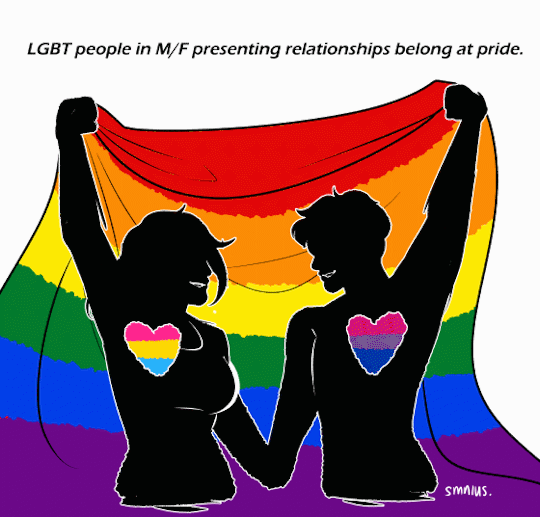
Gentle reminder that LGBT individuals in M/F presenting relationships still belong at pride. M/F relationships do not erase their LGBT identity.
They might be trans, they might be bi/pan, they might be closeted.
Whatever their identity is, it’s none of your business.
Don’t judge, Stay safe, Spread love, Happy pride!
56K notes
·
View notes
Video
youtube
Upon wondering where in the vast landscape of history to start I decided that the best way to start this off would be to explain how I got... here. How did the girl who hated history all through school decide that A) Actually no wait history is kinda rad and B) History is so rad actually, I’m going to willingly take hours out of my life to study it and create a whole blog that may not ever even have any readers.
I enjoy watching a film critic on youtube by the name of Lindsay Ellis. She’s great, and if you're into film study in any way you should totally check her out. She has two videos in particular that led me here. The first was her video about bright which brought the term ‘queer coding’ into my life. And oh, how it has changed things for the better. The second was episode 8 of her whole plate series where she talked about queer theory. I’ll leave the youtube at the end of this in case anyone is interested.
So yes, here we are, I’ve realized that I want to see more. I want to know more about queer coding. I want to know more about why it exists. Why are all of the Disney villains so... gay? Why are so many characters that appear to be blatantly queer never truly confirmed queer? What is queerbaiting?
Logically I decided to research this in the best possible way, tripping and stumbling through a youtube rabbit hole. My next most notable discovery that led me here is youtuber Rowan Ellis. While looking for more information on queer coding and queerbaiting and queer cinema as a whole I came across her video on the evolution of queerbaiting. This was my first real experience looking at the history side of this. As I stated before, history was really not my jam in school. It was two of her other videos that really cemented that this was something I wanted to know more about. Something that I wanted more people to know about. Something that I thought was too important for me to not have learned more about this in my twenty-three years of life. Those two videos go over the history of homophobia in schools and the issue with queer history, namely that finding real authentic sources is such an issue because for so long being openly gay has been ostracized or outright criminalized leading to our history being almost... erased in a way.
I may not like history much. But you know what I always did always like? A good mystery, and that’s exactly what lead me here. The mysteries of “why is queerness portrayed this way in cinema?” and “Why have queer rights taken so long to get?” have brought me to a place where I’m actually excited about learning history for the first time.
Alternatively, you could just as easily say that part of the reason that I disliked history in a broad sense was that it was dominantly written largely by similar groups of people with similar ideals and by and large I never really liked the conquerors' narratives. I didn’t like learning about “pilgrims and Indians” each year having more things be revealed to be lies. I didn’t appreciate that half of my grade school history lessons were really just made up stories because I was “too young” to learn about the atrocities that happened in our country.
In any case, our train continues on past this tangent, to me finding the video at the top of this post. The first solid video strictly about queer history. The most real truest jumping off point. This journey has led me to a few wonderful podcasts, multiple new youtube interests, and a lot, and I mean a whole lot of articles to read. With each new bit of information that I learn about I find myself wanting to know more, and since my family and friends are probably growing tired of listening, this is where all the cool things that I learn about get to go from now on. I’m still left with the question of where to start, but having explained fully and truly how this journey started the beginning is beginning to feel less daunting.
youtube videos referenced in order:
Lindsay Ellis
https://www.youtube.com/watch?v=gLOxQxMnEz8
https://www.youtube.com/watch?v=btbAxY6P3Oc
Rowan Ellis
https://www.youtube.com/watch?v=riKVQjZK1z8
https://www.youtube.com/watch?v=BgHDWdQEQmw
https://www.youtube.com/watch?v=H5pMa-WIdW8
Them
https://www.them.us/story/queer-history-beyond-stonewall
0 notes
Text
An introduction part 2
It’s important to know your sources. Not only when looking at the actual sources of content that I will be sharing, but I think it's just as important for you to understand a bit about who I am as I am the one researching and writing out these historic points. Peoples views in life are shaped by their experiences and it’s not surprising that someone who was less fortunate, ie. less privileged, may have differing opinions of views on any of the content that I present you with. So, with that said let's talk about privilege for a moment.
Many people know about privilege through the context of memes dedicated to how silly social justice warriors (sjws) are and how “triggered” people get and, well basically there's just a whole lot of negative association and jokes there. Or at least that’s what I’ve experienced almost everywhere outside of Tumblr and my teachers (my teachers were not typical teachers, I did not go to a traditional high school, I cannot confirm or deny whether or not the effects of various privileges are discussed in general public schools or the extent upon which the students at such schools actually take those lessons in. I can confirm that the talking of privileges in my school was met with mostly comments about how our teachers were definitely sjws)
That said, let's check some privilege.
According to checkmyprivilege.com my privilege level is “Advantaged with a score of 40″. It’s a silly site, not to be taken too seriously. In all honesty, I have a lot of privileges. I am a white passing, straight-passing, able-bodied, cisgendered woman who had the ability to get herself out of the traditional school system at the start of high school, and while I identify as queer, I have been unbelievably lucky in the circumstances of my queerness. I was born into a family that loved and supported and accepted me through all my life's journeys. I was not a first generation queer by any means and the fact that I had role models that were queer in some way shape or form throughout my life has made things that much easier for me as a person. I don’t have a big coming out story because it wasn’t a big deal. I never personally faced discrimination or homophobia from my inner circle or my family. At least not outright. I have also not faced much bullying over my sexuality or at least none that was so persistent that the stuck with me.
In the past, I used the label bisexual to define myself as when I grew up that label seemed like the most appropriate to how I experienced sexuality. While I have experienced little full on outright homophobia (outside of the pride protesters and a very few people who were the vast minority of my already very small high school), I experienced quite a bit of biphobia, both from people within the queer community and people outside of it. For anyone who doesn’t know what biphobia is it is an aversion toward bisexuality. It takes the form of people making assumptions about me personally based on the label that I used, and people outright telling me that I am wrong about my sexuality. Some examples include being told that all bisexuals are just sluts, that bisexuals don't actually exist and that I needed to “pick a side”, or every one of my past my significant others favorite “You’re with me now so that means you're a straight/lesbian person now and you need to stop calling yourself bisexual”. When certain friends in high school came out as pansexual they proceeded to tell me that by using the label bisexual I was asserting that I did not, would not, could not be interested in anyone who did not fall into the two cisgendered sexes and that using that label was inherently transphobic and uninclusive, and while that is not why I changed my label, I do think that it speaks numbers about the fact that even within a community of people who know that sexuality is a weird strange thing that warrants much more discussion than just a label itself provides we are still ready to jump at people for the label they use without having those discussions.
The need for those discussions is exactly why I choose to use the label queer now. First of all, it is a great umbrella term, and second, it actually forces people to ask me what It means to me, and what it means to me is that I really couldn’t care less what's in your pants and under your shirt. If I’m into you I’m into you.
This took a bit of a tangent, but in the grand scheme of things, it is technically all relevant as far as who I am and why this topic is important to me specifically as well as how my specific privileges and various life experiences may affect how I personally view and subsequently relay the information that I present on this blog.
#pride#lgbtpride#lgbt pride#pride month#gay pride#sources#about me#queer pride#queer#bisexual#biphobia#privilege#check your privilege
0 notes
Text
An introduction
I want to make a serious effort for this project to be something that I continue both for my own sake and need and for every single person out there who never learned about queer history in school, and who may not have learned much queer history outside of school.
First and foremost I want this to be a blog that talks about the long history that all queer people share. Because it exists. And it spans not decades, but centuries. And while I’m sure that many things have been erased and forgotten with the passage of time, there is still so much there. You cannot erase a whole group of people, try as you might. And while the public school system may not think that teaching queer history is important, I think it is important.
I also want to specifically look into queer cinema, or more accurately the development and overall character arch that queer people have had in cinema historically. Because as the public opinion of the queer community has shifted throughout time so too has the portrayal of queerness in cinema. I think that looking at that is just as important as looking at the actual queer historic moments because for many people, children especially, cinema is their first real experience of queerness; and while times are changing, and there are many people who are fortunate enough born into loving supporting families and communities, just as many are not. For those who are not, the media portrayal of queerness is often one of the first ways that they learn about the community as a whole. So, it makes sense to me that if I am making a blog to talk about queer history and help educate people, it follows that logically I would also talk about the “education” that people may have gotten.
#pride#pride month#gay pride#lgbt pride#lgbtq#lgbtqai#lgbtpride#lgbtq community#lgbt+ history#gay#gay history#queer pride#queer#queer history#queer cinema#new blog#introduction
1 note
·
View note


